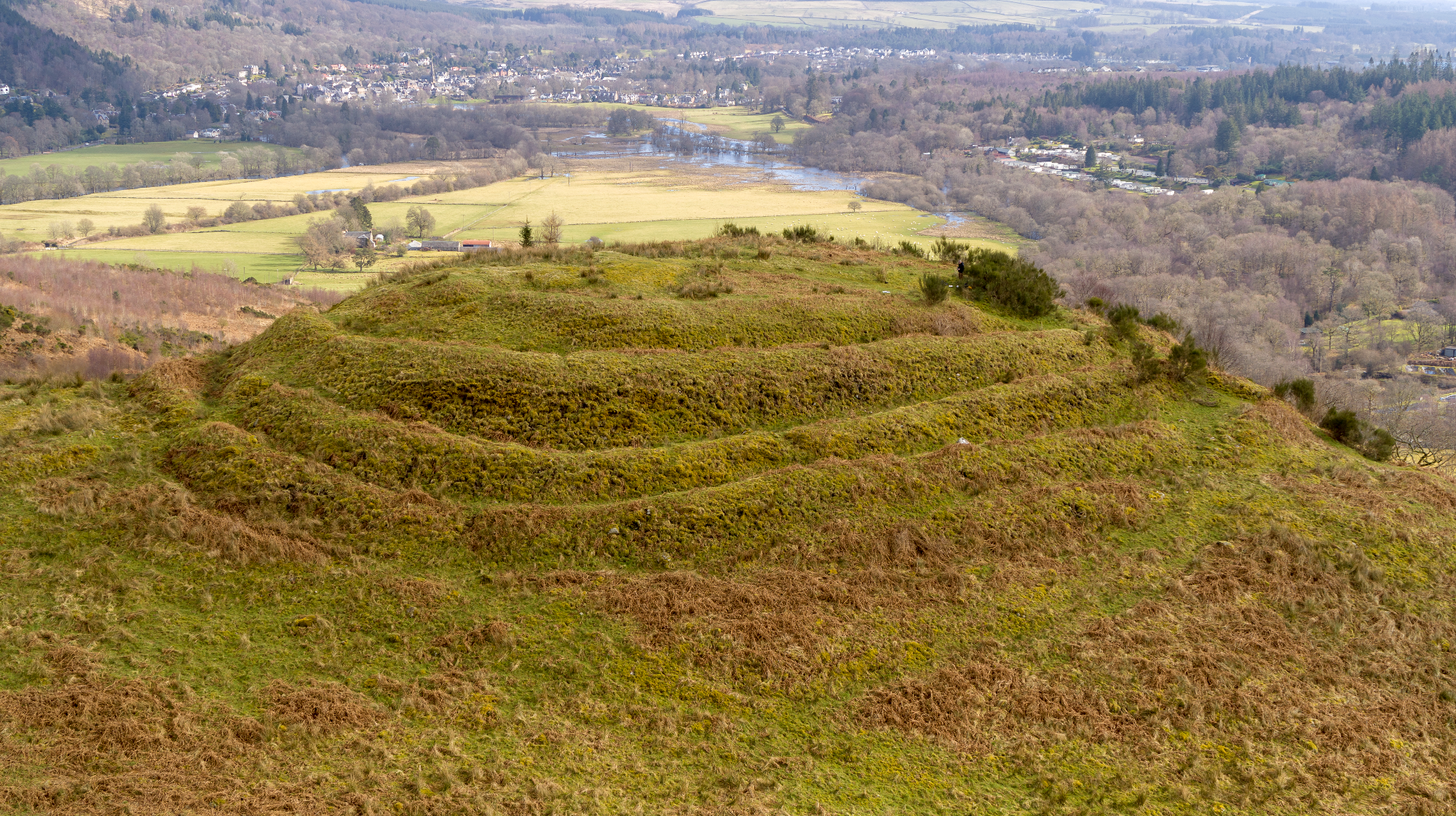
Activity: Imagining an Artefact’s Story
The excavations at Dunmore revealed traces of a roundhouse on the top of the hillfort, and inside, a bangle. The bangle is made of shale or cannel coal, a type of soft, smooth, dark-coloured stone. The inside of the bangle is smooth and shiny, showing that it had been worn. But how did it end up buried in the remains of a roundhouse?
Activity
Encourage your learners to tell the story of the bangle, from its beginnings as a piece of rock, to being lost, to being excavated centuries later. The bangle is an ideal object for this activity since its a simple piece with a clear use, worn and perhaps lost accidentally, before being rediscovered during a community excavation many years later. However, it may have passed through many hands during its use. Encourage your learners to think up wild stories for its journey from rock to jewellery to archaeological artefact!
See below for more information about possible stages in the bangle’s life cycle, and below that, some background information to help you prepare for the session. We have provided a PowerPoint presentation to use to introduce the activity. You might like to show your learners some videos about the Iron Age more generally to help them get a feel for life in prehistory. There are a few on BBC Teach, for example.
Your learners could write short imaginative stories or poems. Alternatively, they could create comic strips showing key stages in the bangle’s life cycle. You can even turn it into a collaborative activity with your class working in groups, taking it in turns to come up with the next chapter in the bangle’s story.
Life Cycle of a Bangle
The bangle’s life cycle might have included some of the following elements:
Stone is quarried and carried away
Stone is shaped into a bangle
Bangle is sold or traded
Bangle is worn and enjoyed, perhaps passed down from one person to another
Bangle is lost, perhaps dropped into vegetation in the flooring of the roundhouse, or perhaps it was placed there as a special offering
The roundhouse is abandoned and eventually collapses
Over centuries, soil builds up over the ruins of the roundhouse and the site becomes grassed over
For many years, people visit the hillfort, walking to the top and having picnics with the bangle just under their feet
In 2021, the bangle is discovered by an archaeologist
This is just an example - the bangle’s story could have been very different! Perhaps it was hidden on purpose by a jealous sibling, and forgotten about. Perhaps it was given from one tribe to another, as a gift in return for a favour of some kind.
Background Information About the Bangle
Your learners might like to find out more about how stone bangles were made before they write their stories. Take a look at the images here and text here for help imagining how these types of bangles were made. Briefly, a flat piece of stone was shaped first into a disc shape, and then the inner disc was removed to create a ring of stone. This was polished and sometimes decorated to create an attractive bangle with a lustrous sheen.
Typically a rich dark brown to black in colour, shale/cannel coal and similar rock types and can be smoothed and polished to a beautiful burnish. The rich colour and sheen are ideal for producing eye-catching jewellery and decorative items, and as a result these types of stone have been used from the Neolithic to the present day to make beads, necklaces and other ornaments. These bangles are not rare but not everyone would have had one. Based on size, it seems that people of all ages and genders wore them.
The main sources of shale/cannel coal/lignite in Scotland cluster around the central Scottish mainland and the west coast, so the stone used for the Dunmore bangle probably didn’t come from too far afield. Further analysis could help narrow down where exactly it was sourced.
Usually archaeologists find only fragments of broken bangles. The recovery of an intact bangle at the hillfort is quite rare so close analysis of the context it came from might help determine whether it was placed in the ground intentionally as a purposeful deposit.

Leading Questions
How?
Imagine how the bangle was made, what tools were used, and whether its creation was a simple process or fraught with difficulties
Why?
Why did someone make this bangle? Was it a present for a friend, or a consumer good to be traded?
Where?
Where was the rock taken from, and how did it get to Dunmore?
Who?
Imagine the various people who have come into contact with the bangle during its life cycle

